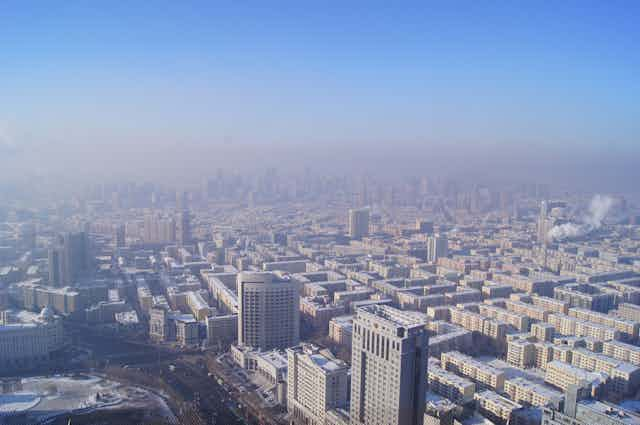New research published today in Nature gives us a better idea of how much aerosols produced by people are influencing climate change.
Aerosols — tiny particles produced naturally and by burning fossil fuels — work against warming by greenhouse gases to cool the Earth. This led scientists to speculate that aerosols were “masking” warming, and that without aerosols in the atmosphere the Earth would be heating up much faster.
The study released today shows that aerosols produced by people are not as important as once thought. But natural aerosols are far more important for their influence on climate, and researchers warn without better understanding of natural sources of aerosols, climate forecasts will fall short.
Aerosols have two sources: natural emissions such as those from volcanoes, bushfires and the ocean; and unnatural sources such as burning fossil fuels and sulphate emissions. They can be solids such as smoke and sea salt, liquids such as water, or gases such as sulphur dioxide (SO2).
Through their interaction with clouds, aerosols reflect more of the sun’s energy back into space, meaning that their overall effect is to cool the Earth. Scientists measure this cooling through “radiative forcing”. Aerosols from both natural and human sources have an overall forcing of -1.16 Watts per square metre.
But this cooling effect of aerosols is dwarfed by the warming effect of increased greenhouse gases. That’s why the Earth is heating up. Knowing these influences is vital for understanding the Earth’s “climate sensitivity” — how much the planet will warm in the future.
The research published today uses statistical analysis to show that human aerosols have likely had no change in cooling effect since the 1980s, even as aerosol emissions have increased. And cleaning up aerosols, such as those that are the source of dramatic air pollution in China, would likely have little impact on climate.
Dr Matthew Woodhouse, research scientist at CSIRO and an author on the paper, explained:
At high concentrations of aerosols, like the present, the change in forcing for a given change in anthropogenic aerosols is actually quite small. It’s only when you get down to what is quite a clean atmosphere anyway that you see big changes in forcing. Cleaning up 10% of aerosols won’t necessarily make a big difference to the forcing.
Measuring and modelling these natural sources is the next challenge for climate scientists, Dr Woodhouse said. Calculating the effect of aerosols is very complicated. For example aerosols such as sea salt are highly influenced by winds, which are difficult to model.
Professor Andrew Glikson at Australian National University said the research was solid, but had its limitations in focusing on short-term climate effects. Aerosols have a short lifetime in the atmosphere before they fall back to Earth, which means if aerosol emissions were halted they would quickly cease their cooling effect.
Professor Glikson also said new research means clean air policies will need to account for variations in natural aerosol emissions.

